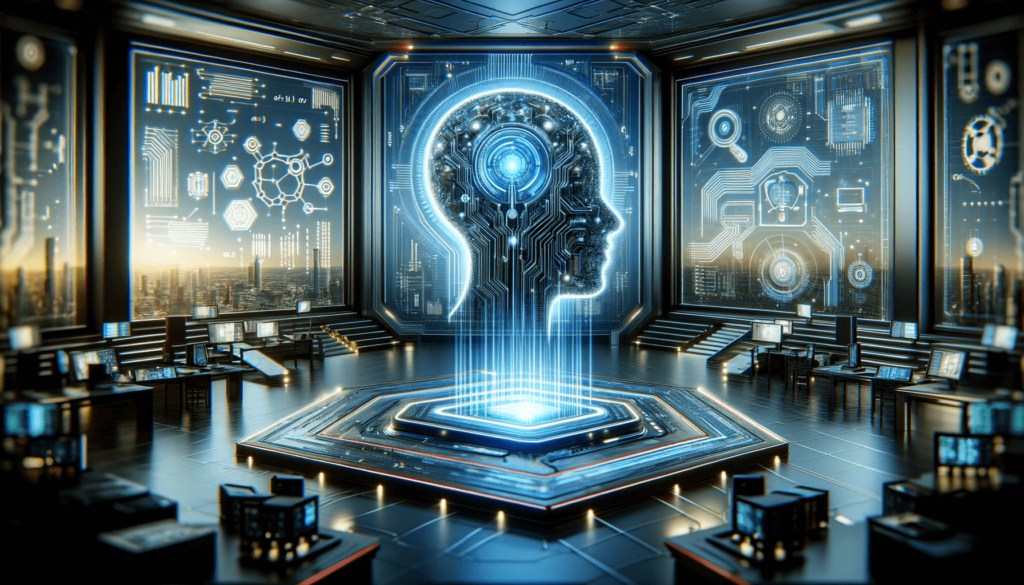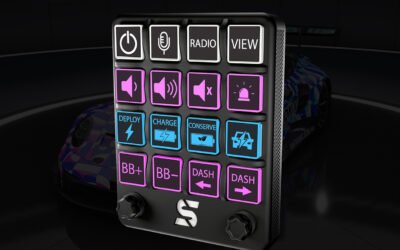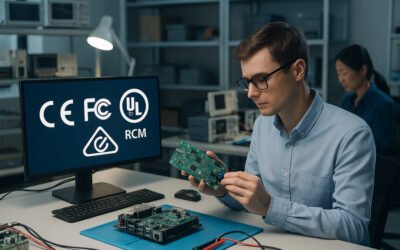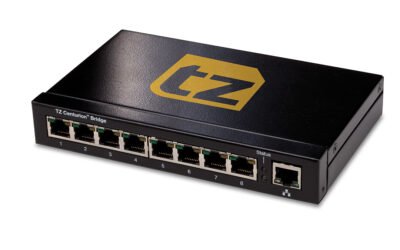
Introduction to AI in Embedded Software
Artificial Intelligence (AI) is revolutionizing industries, and embedded software is no exception. This guide dives deep into how AI integrates with embedded systems, offering engineers a powerful new toolkit. From smartphones to self-driving cars, AI is transforming how embedded software operates, making devices not just smart but highly adaptive and intuitive.
Defining Artificial Intelligence and Embedded Software
Artificial Intelligence, often regarded for its ability to replicate human decision-making, is now revolutionizing embedded software systems. Embedded software controls everything from household gadgets to complex industrial systems, with a primary role of running on hardware platforms that often have limited resources. When AI is integrated, these systems can adapt, learn, and execute decisions autonomously, creating smarter, more efficient devices.
The Rising Importance of AI in Development
Why is AI becoming a big deal in embedded software development? It’s simple: AI enhances embedded systems by introducing advanced data processing and decision-making abilities, turning standard systems into learning, adaptable machines. For engineers, AI brings significant value by optimizing performance, streamlining processes, and unlocking new features in embedded devices. From autonomous vehicles to smart home devices, AI integration is reshaping how we design and use embedded software.
Historical Context: Embedded Software Before AI
Traditional Methods in Embedded Systems
Before AI entered the scene, embedded software was rigid and task-specific, requiring precise, hand-coded instructions for each function. Engineers had to account for limited hardware resources, balancing functionality and efficiency within tight memory and processing constraints.
Limitations and Challenges Pre-AI Era
These traditional systems lacked flexibility, which made upgrading or adapting to unforeseen conditions a lengthy and difficult process. Without the ability to learn from data, embedded systems relied solely on pre-programmed instructions. This left engineers to rewrite entire programs for even minor updates or new functionalities.
AI’s Integration in Embedded Software Engineering
Key AI Technologies Transforming Embedded Systems
AI technologies like Machine Learning (ML), Neural Networks, and Natural Language Processing (NLP) are redefining the landscape of embedded software. These tools enable systems to learn from user behavior, data, and external environments, making them more responsive and dynamic.
Take smart wearables, for instance. By integrating AI, these devices can now predict health trends and provide personalized feedback. Or consider smart homes, where AI-driven embedded systems are learning our habits and preferences, making our lives more comfortable and energy-efficient. These are not just gadgets; they’re AI-empowered companions, thanks to the innovative fusion of AI in development.
How AI Algorithms Improve Embedded Software Efficiency
Machine Learning Models in Embedded Systems
At the heart of AI-embedded systems are Machine Learning algorithms, which enable devices to process data and make decisions autonomously. These systems become more intuitive and efficient over time, reducing the need for constant human intervention.
Optimizing Performance with AI Algorithms
AI algorithms not only increase functionality but also optimize resource use, such as processing power and memory. This is crucial in embedded systems, where hardware limitations often restrict software capabilities. AI helps systems achieve more with fewer resources, improving performance without increasing the hardware burden.
The Role of AI in Enhancing Embedded System Security
Now, let’s turn up the heat a bit – quite literally! Thermal management in PCB design is like being a climate controller. You’ve got to keep things cool to ensure your electronics don’t overheat and malfunction. This is where the real finesse in electronics design comes into play.
AI in Cybersecurity for Embedded Software
Now, let’s turn our attention to a crucial aspect – security. With AI in the mix, the cybersecurity landscape in embedded software is getting a serious upgrade. Think of AI as the new guardian angel for embedded systems. It’s like having an intelligent, vigilant watchdog that never sleeps. These AI systems can detect and respond to security threats in real-time, a feat that was almost impossible with traditional security measures. They’re constantly learning from new threats, making them more adept at guarding our devices against cyber-attacks. It’s like training a super-spy who’s always two steps ahead of cyber villains!
Preventive Measures and Threat Detection through AI
But AI’s role isn’t just reactive; it’s also about prevention. By analyzing patterns and predicting potential security breaches, AI is like a weather forecaster for cyber threats, giving us a heads-up before the storm hits. This proactive approach is changing the game in embedded software security. It means our systems are not just responding to threats; they’re actively preventing them. It’s as if our devices are equipped with a sixth sense, sensing danger before it strikes.
In this new era of AI-driven security, we, as embedded software engineers, are witnessing a paradigm shift. Our systems are becoming fortresses, not by adding more locks and barriers, but by being smart enough to outwit potential threats. Let’s continue exploring how AI is making our world safer and smarter. Isn’t it exciting to be part of this revolution?
Challenges and Solutions in AI-Embedded Software Integration
Overcoming Technical Limitations
Integrating AI into embedded software isn’t all smooth sailing; it comes with its fair share of challenges. The biggest hurdle? Technical limitations. Embedded systems often have limited processing power and memory, not exactly the ideal playground for resource-hungry AI algorithms. It’s like trying to fit a powerful engine into a tiny car. But here’s where the ingenuity of us embedded software engineers comes into play. We’re finding clever ways to streamline AI algorithms, making them leaner and more efficient. It’s a bit like engineering a miniaturized, yet powerful, engine that fits perfectly into that small car and runs like a dream.
Balancing AI Complexity with Hardware Constraints
Then there’s the balancing act between AI complexity and hardware constraints. How do we pack advanced AI capabilities into limited hardware without overloading it? It’s a delicate dance, but we’re learning the steps quickly. Techniques like edge computing are coming to the rescue, allowing data processing to be done closer to where it’s needed, reducing the load on central resources. Imagine a team where each member handles tasks right where they are, instead of running everything through a central manager. It’s more efficient and way faster.
In this journey of integrating AI with embedded software, we’re not just facing challenges; we’re creating innovative solutions that push the boundaries of what’s possible. And that’s what makes this field so thrilling. Are you ready to tackle these challenges head-on and be part of this exciting evolution? Let’s dive deeper and discover more!
Future Trends: AI’s Evolving Role in Embedded Software
Predictive Analytics and Embedded AI
Predictive analytics is poised to be one of the most transformative applications of AI in embedded software. By anticipating future behaviors and needs, AI-driven embedded systems can proactively adjust and optimize operations.
The Future Skillset for Engineers
As AI becomes integral to embedded software, engineers will need to expand their skillsets. Learning about machine learning models, neural networks, and data analytics will become crucial for future embedded software engineers. Continuous learning will be key in this rapidly evolving field.
Continuous Learning and Adaptation for Engineers
And let’s not forget, in this fast-paced AI era, continuous learning is key. The AI landscape is constantly evolving, and we need to keep up. It’s like riding a wave; you need to stay on top to ride it successfully. This means staying updated with the latest trends, attending workshops, and maybe even going back to the classroom, either virtually or physically. The goal? To remain relevant and efficient in a world where AI is quickly becoming the norm in embedded software development.
As we navigate through these changes, one thing is clear: our field is getting more exciting by the day. It’s a time of growth, innovation, and endless possibilities. So, are you ready to upgrade your skillset and ride the wave of AI in embedded software development? Let’s embark on this learning journey together!
How Companies Are Adapting to AI in Embedded Software
Leading Companies and Their AI Strategies
In the fast-evolving landscape of AI in embedded software, it’s not just us engineers who are adapting; entire companies are transforming. Leading tech giants are trailblazing with AI strategies that are reshaping the industry. It’s like watching a high-stakes race where every player is pushing the boundaries of innovation. These companies are not just implementing AI; they’re embedding it into the core of their products, making it an integral part of their identity. It’s a bold move, but one that’s setting new standards in efficiency, user experience, and performance.
Conclusion
AI has already started reshaping embedded software, making systems smarter, more adaptive, and increasingly secure. From enabling predictive analytics to optimizing performance and security, AI is unlocking new possibilities in the embedded software space.
Looking Ahead: What Engineers Need to Know
Looking ahead, the future is bright and full of potential. For us embedded software engineers, this means embracing continuous learning and staying agile in a rapidly evolving field. The AI wave is here, and it’s not just about riding it; it’s about steering it. We have the opportunity to be at the forefront of this revolution, shaping the future of technology. It’s an exciting time to be in embedded software development, a time to innovate, explore, and create like never before.





0 Comments